J
Jeanh
Guest
 Victor Prado for Reader's Digest
Victor Prado for Reader's DigestWhy Soccer Balls Are Black-and-White
Turns out the sports staple was made for TV. For the 1970 World Cup in Mexico—the first of its kind to be broadcast live on television—Adidas created the iconic black-and-white paneled ball, intended to catch the eyes of viewers better than a single-colored one would as it moved across black-and-white TV screens. The black pentagons also helped players and referees recognize the swerve and flight of the ball.
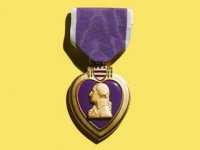 Victor Prado for Reader's Digest
Victor Prado for Reader's DigestWhy the Purple Heart Is Purple
When the Continental Congress forbade George Washington from promoting soldiers during the American Revolution, the revered general got crafty. On August 7, 1782, he established the Badge of Military Merit: a purple cloth or silk heart to be worn over a soldier’s left ****** and signify an elevated status. While it’s hard to know why Washington opted for that hue, the history behind the color purple’s regal reputation dates back to the 15th century BC, when ancient Mediterranean clothiers created the shade from sea snail secretions in a long and expensive process. The result: Only royalty could afford purple clothes.
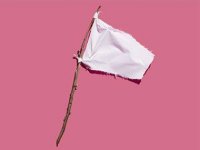 Victor Prado for Reader's Digest
Victor Prado for Reader's DigestWhy Surrender Flags Are White
Some believe the peacemaking symbol comes from the bland garb of ancient times. Soldiers and civilians alike had white clothes handy, and since they were highly visible against neutral backgrounds, the clothes could be waved to easily convey passivity.
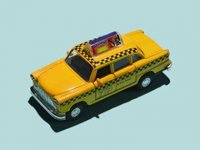 Victor Prado for Reader's DIgest
Victor Prado for Reader's DIgestWhy Taxis Are Yellow
If you hailed a New York City cab in 1905, a car painted red and green would screech to a halt before you. So how did the color change from two-tone to bumblebee-bright? In 1907, Albert Rockwell created a taxi cab with an innovative 15-horsepower engine at his car company in Connecticut. Legend has it that his wife suggested the cars be painted yellow, and they’ve been that way ever since. By 1909, yellow taxis were zipping around New York City, courtesy of Rockwell’s cab company.
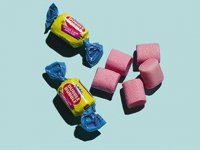 Victor Prado for Reader's DIgest
Victor Prado for Reader's DIgestWhy Bubble Gum Is Pink
Fate would have it that hot pink dye was readily available at the Fleer Chewing Gum Company when employee Walter Diemer experimented in 1928 with a new gum recipe—as he liked to do in his spare time. The 23-year-old created a less sticky and more flexible formula that resulted in bigger bubbles. He poured pink dye into the batch, and America’s favorite oral fixation was born.
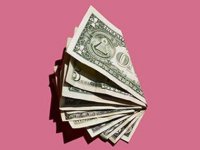 Victor Prado for Reader's DIgest
Victor Prado for Reader's DIgestWhy Money Is Green
Why don’t ATMs spew purple bills? Because of long-lasting dye. When paper notes were introduced in 1929, the U.S. Bureau of Engraving and Printing opted to use green ink because the color was relatively high in its resistance to chemical and physical changes. Also, at the time, green pigment was available in large quantities for quick printing.
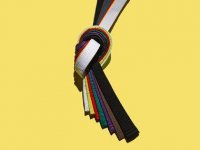 Victor Prado for Reader's Digest
Victor Prado for Reader's DigestWhy Karate Belts Are Black
There are a lot of myths surrounding the martial arts’ most prestigious designation. The most likely story, however, claims that white belts used to be dyed to a new color upon a student’s advancement to a higher level. Hence the increasingly darker order: white, yellow, orange, green, blue, purple, brown, red, and black.
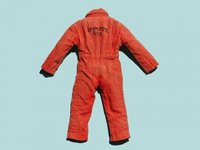 Victor Prado for Reader's Digest
Victor Prado for Reader's DigestWhy Prison Jumpsuits Are Orange
Shows like Orange Is the New Black have colored the perception of everyday prison garb. To set the record straight: Some say that prisons started putting inmates in orange uniforms to make them easy to spot while in transit or in public. As for day-to-day uniforms, it depends on the prison. California outfits its male prisoners in denim jeans and jackets and blue chambray shirts, while the federal maximum security prison in Florence, Colorado, issues khaki trousers and tops.
 Victor Prado for Reader's Digest
Victor Prado for Reader's DigestWhy First-Place Ribbons Are Blue
Some scholars say we have an old nautical award to thank. In the 1860s, the Blue Riband—a pennant flown from a ship’s mast—was a prize given to the passenger ship making the fastest transatlantic crossing. Scholars speculate that over time, the spelling blue riband was changed to blue ribbon, serving as a symbol of general excellence.
You do not have permission to view the full content of this post. Log in or register now.Victor Prado for Reader's Digest
Why a Matador’s Cape Is Red
Bulls charge at the sight of red, right? Wrong. Bulls are color-blind. Thus, a fighting bull is likely enraged by the cape’s quick movement instead of its color. So why the bold hue? Some say it helps mask one of the more gruesome aspects of a bullfight: splatters of the animal’s blood.
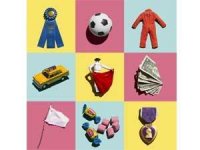 Victor Prado for Reader’s Digest
Victor Prado for Reader’s DigestWhy Wedding Dresses Are White
The classic white dress came from a European fashion trend. In 1840, England’s Queen Victoria donned a white lace gown to marry Albert of Saxe-Coburg. At the time, brides were married in any color—even black was popular. The queen’s choice, however, quickly inspired other brides to opt for white. In the early 19th century, Godey’s Lady’s Book issued its blessing: “Custom has decided that white is the most fitting hue for a wedding.
Read more: You do not have permission to view the full content of this post. Log in or register now.
Attachments
-
You do not have permission to view the full content of this post. Log in or register now.